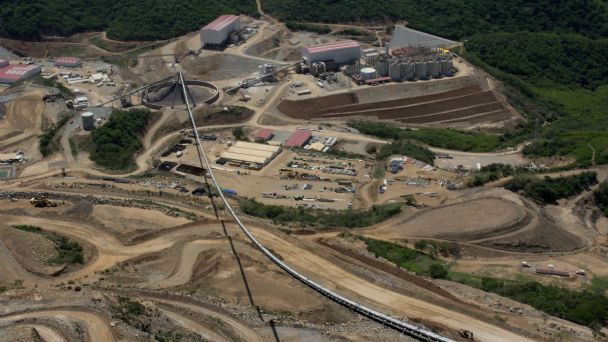
Alan Swaby talks to one Zimbabwean business gradually regaining its feet and trying to make sense out of the chaos of the recent past.
In reality, it was quite callous, but the hyperinflation in Zimbabwe at the back end of 2008 did give the world’s comedians ready material to play with, and kept the media generally bemused if not amused. But it seems we hardly knew the worst of it. Forget inflation rates of one million per cent: Professor Steve Henke estimated that at its worst, inflation was 89.7 sextillion per cent—and this page isn’t wide enough for that many zeros.
“Whatever the actual number,” recalls Anthony Kinnaird, head of marketing for National Foods of Zimbabwe, “it was a surreal time, with prices effectively doubling every half an hour!”
Eventually, a degree of stability was created by abandoning the Zimbabwean dollar in favour of the US dollar. It would take someone with a far deeper understanding of economics to explain how the country survived; but the fact is it did and today is not doing too badly—although this of course is extremely relative. The forced marriage between two opposing political parties is still struggling to find common ground; but the new government has created a better atmosphere for businesses than they’ve had for a long time.
“In Zimbabwe,” says Kinnaird, “we talk about the lost decade. This country had so much to offer and used to be the breadbasket of Africa. Now there is unemployment of 80 per cent or more and we have to import much of the wheat and maize the country once grew and exported.”
Having said that, more and more of the nationalised farms are now going back into production, often with displaced former farm owners brought in as managers. It’s far from ideal, and the former land owners must be well and truly galled; but it is beneficial for the country.
It’s also ensuring that National Foods and the country’s other milling companies have a few more years before the inevitable invasion by international businesses re-appears on the agenda. “Investing in Zimbabwe is still too risky for most,” says Kinnaird, “but with stagnation in the US domestic scene, it’s only a matter of time.”
Fortunately for National Foods, it hasn’t put off South Africa’s Tiger Brands which, together with local conglomerate Innscor Africa, holds 70 per cent of shares. It’s a move that is giving National Foods the opportunity to upgrade machinery and equipment that has been neglected for years. “During the inflationary period,” says Kinnaird, “the emphasis was on protecting our balance sheet. Any spare cash around was used to buy up shares on the stock exchange. Consequently, there was little left over for maintenance and repairs but now, with a degree of stabilisation, we have been able to resell shares and invest the proceeds.”
One of the activities National Foods now has to consider is marketing. Inflation meant that whatever went on the shelves was swept up immediately in the knowledge that it would be more valuable the following day. Today, even those lucky few in employment find that salaries have been eroded and consumers are much more attentive about quality and value for money. So while National Foods is still the largest business in its sector, it is having to fight to maintain that position. Local TV stations have largely been abandoned in favour of satellite TV from South Africa; but the Zimbabweans do love the radio, with audience figures reaching 86 per cent on a weekly basis.
The business is built around the four basic staple foods: flour, maize, oil and (imported and aspirational) rice. The by-products of the company’s manufacturing processes are converted to stockfeeds, which is a significant part of the Group’s business. To ensure that there is constant discipline and focus on the core business, it has limited its range to just 28 products, the mot popular of which is a self-raising flour (it has its own raising agent included) which is used to make a rudimentary bread, accounting for the major food of most families.
Where once it could source all the raw material needed from local farmers, 60 per cent of the 250,000 tons of wheat and maize needed annually has to be imported. It would, of course, be possible to import already milled flour and maize meal, and many do. But a key component of National Foods’ business mix is turning husks from wheat grains into animal feed stocks including, amazingly enough, a vegetarian supplement for crocodiles as well as the more usual pellets for chickens, pigs and cows. Other items in the range include down packed commodities such as rice and salt, where National Foods has the number one brands and around a 40 per cent share of market.
For domestic consumers, Zimbabwe has three retail chains accounting for around 200 stores. National Foods services these through 22 depots it has right across the country. But so much activity in Zimbabwe is informal that retailing cannot be viewed there as it would in most other countries. “Research among the 80 or 90 per cent without formal jobs,” explains Kinnaird, “paints a picture of a hand-to-mouth existence. The breadwinner for a family might have $5 in hand with which they’ll buy something to sell in the hope of turning $5 into $8. The $5 float is kept back and the $3 profit is used to feed the family. A bag of our flour is just as likely to be sold from a table top as it is from a supermarket shelf.”
It’s not a happy picture by any means; but Kinnaird is nevertheless very optimistic about the future. “If the next change of government goes off peacefully and democratically,” he says, “then the future will once again be bright. Zimbabweans have a better than 80 per cent literacy rate, they are naturally friendly and they are hardworking. Even under the current circumstances, GDP grew by 15 per cent last year. Imagine what we could achieve given the right opportunity.” www.natfood.co.zw
DOWNLOAD
 NationalFOODS_SEPT11_emea_bro-s.pdf
NationalFOODS_SEPT11_emea_bro-s.pdf













